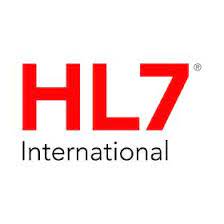
Introduction: Understanding HL7’s Importance in Healthcare
In the intricate web of healthcare, HL7 serves as a vital framework that enhances communication and coordination among disparate systems. Born from the necessity for seamless information exchange, HL7’s standards facilitate interoperability, ensuring that patient data flows seamlessly across hospitals, laboratories, and clinics. This not only streamlines administrative processes but also enriches patient care by providing healthcare providers with comprehensive real-time information.
Moreover, as telehealth and electronic health records (EHRs) gain prominence, HL7’s role is more critical than ever. It empowers systems to speak the same language, reducing errors and improving clinical outcomes. Understanding HL7 isn’t just about technical specifications; it’s about grasping how unified data can revolutionize decision-making in patient care and operational efficiency—even paving the way for innovative solutions like predictive analytics in medicine.
What is HL7? A Brief Overview
HL7, or Health Level Seven, is a set of international standards for the exchange of electronic health information. It plays a crucial role in ensuring seamless communication between various healthcare systems and applications. By facilitating interoperability, HL7 enhances patient care by ensuring that health data is clear and accessible across diverse platforms.
The true power of HL7 Training lies not just in its standards but in its ability to promote collaborative healthcare ecosystems. With the rise of telemedicine and digital health records, understanding HL7’s framework allows healthcare providers to harness new technologies effectively. Ultimately, this leads to improved patient outcomes while reducing operational inefficiencies—a win-win scenario for patients and providers alike!
Key Benefits of Using HL7 Standards
HL7 standards enhance interoperability, allowing disparate healthcare systems to communicate seamlessly. This facilitates timely access to patient data, ultimately improving care coordination and outcomes. By enabling standardized messaging formats, HL7 reduces errors that can arise from miscommunication between systems.
Moreover, adopting HL7 standards fosters innovation within healthcare technology. Developers can build upon a common framework, accelerating the integration of new solutions like telehealth and AI-driven analytics. As HL7 continuously evolves with industry needs, it ensures organizations remain agile in an ever-changing environment. Ultimately, embracing these standards not only enhances efficiency but also empowers providers to focus on what matters most: patient care.
Interoperability: Connecting Disparate Health Systems
Interoperability transcends mere data exchange; it enables a seamless flow of information among disparate health systems, revolutionizing patient care. When data can communicate effortlessly across platforms, clinicians gain holistic insights into patient histories, leading to more informed decisions. Imagine a world where emergency responders access real-time medical records regardless of hospital affiliation – this is the promise of effective interoperability.
The foundation for this transformational connectivity often lies in HL7 standards, which facilitate common ground for diverse applications. As healthcare evolves with new technologies and an ever-growing array of devices, fostering interoperability becomes essential not just for efficiency but also for enriching the patient experience. By harnessing these hidden powers within HL7 frameworks, we can bridge gaps between siloed systems and unleash integrated solutions that truly prioritize patient-centric care.
Enhancing Patient Care Through Data Exchange
Effective data exchange via HL7 fosters collaborative care, ensuring that every healthcare professional has access to comprehensive patient information. By harnessing this interoperability, providers can make informed decisions that enhance treatment quality and reduce errors significantly. For instance, real-time updates on patient conditions empower clinical teams to swiftly adjust treatment plans based on the latest developments.
Moreover, this seamless flow of information facilitates personalized medicine; tailored therapies can be developed by integrating genetic data with clinical histories. Imagine a world where predictive analytics not only identify at-risk patients but also suggest proactive interventions—transforming care from reactive to preventive. In essence, efficient data exchanges pave the way for a future where patient outcomes are dramatically improved through shared knowledge across healthcare landscapes.
Common Misconceptions About HL7 Explained
Many assume HL7 is merely a relic of healthcare’s tech past, but it remains pivotal in modern interoperability. Contrary to the belief that it’s only applicable for large hospitals, HL7 standards are crucial for small practices and emerging telehealth solutions, facilitating seamless data exchange across varied systems.
Another prevalent myth is that HL7 implementation guarantees instant interoperability; however, true compatibility requires careful customization and ongoing collaboration among stakeholders. Additionally, some might think HL7 v2.x is outdated since FHIR has emerged, yet both serve distinct purposes—HL7 v2.x shines in traditional environments while FHIR addresses the need for more agile, web-based interactions. Understanding these nuances can unlock new potentials within your health IT strategies.
Future Trends in HL7 and Healthcare Tech
As healthcare technology evolves, HL7 standards are set to play a pivotal role in enhancing interoperability. The rise of FHIR (Fast Healthcare Interoperability Resources) is revolutionizing how data is exchanged, enabling real-time access and integration among disparate systems. This shift not only ensures seamless information flow but also empowers patients with greater control over their health data.
Artificial intelligence and machine learning will further leverage HL7 protocols to analyze vast amounts of healthcare data, providing personalized treatment options and predictive analytics for better patient outcomes. As the industry moves towards value-based care, the synergy between HL7 advancements and innovative tech will be crucial in addressing the complexities of modern healthcare delivery. Embracing these trends promises a more connected, efficient, and patient-centric future.
Conclusion: Unlocking the Full Potential of HL7
Unlocking the full potential of HL7 transcends mere data exchange; it’s about fostering a proactive healthcare ecosystem. By harnessing the framework’s adaptability, organizations can seamlessly integrate emerging technologies like AI and machine learning, elevating patient care to unprecedented levels.
Moreover, the power 9of HL7 lies in its ability to facilitate real-time information sharing among stakeholders, promoting interoperability that empowers clinicians and enhances patient outcomes. As we embrace these hidden capabilities, we pave the way for a future where healthcare is not only efficient but also transformative.